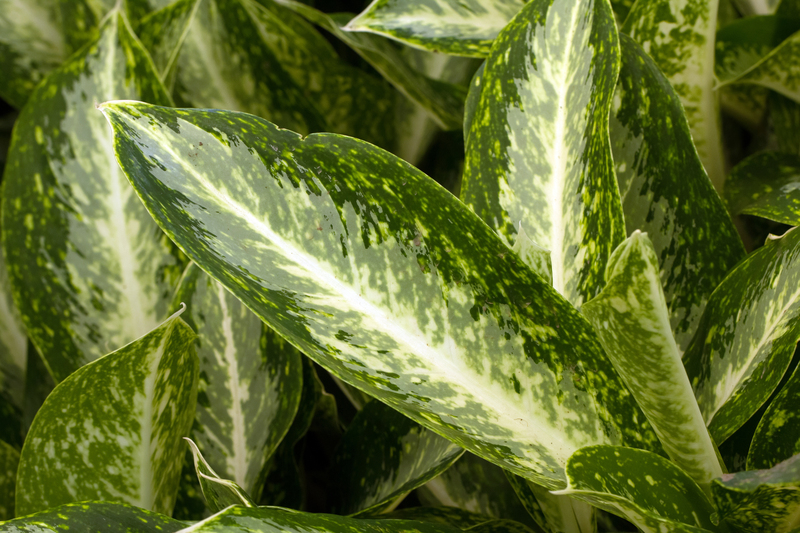Comprehensive Guide to Efficient Herb Garden Setup
Posted on 30/06/2025
Comprehensive Guide to Efficient Herb Garden Setup
Growing your own herbs can be one of the most rewarding gardening experiences. Whether you enjoy fresh herbs for your culinary creations, seek natural remedies, or simply love the aroma and beauty they provide, setting up a productive herb garden efficiently will save you time, money, and effort. This comprehensive guide to efficient herb garden setup covers everything from planning and designing your herb plot to the best maintenance practices, ensuring you reap an abundant harvest year-round.
Why Create an Efficient Herb Garden?
An efficient herb garden setup maximizes yield within the available space, minimizes resource consumption, and makes planting and harvesting convenient. Whether you have a sprawling backyard, a small balcony, or just a sunny windowsill, optimizing your herb garden means:
- Saving time and effort on maintenance
- Better use of water and nutrients
- Continual access to fresh herbs
- Reduced pests and diseases due to proper planning
- Enhanced flavor and aroma of your homegrown produce

Planning Your Herb Garden Setup
1. Assessing Your Space and Light
Start with a thorough assessment of your available space. Herbs require plenty of sunlight (ideally 6-8 hours a day) to flourish. Observe your garden area throughout the day to identify the sunniest spots. If your outdoor space is limited, or you plan for an indoor herb garden installation, a south-facing window or a setup under grow lights can suffice.
- Outdoor Herb Garden: Choose a spot that receives maximum sunlight and is protected from strong winds.
- Indoor Herb Garden: Select a bright window ledge or use full-spectrum grow lights for optimal herb growth.
2. Choosing the Right Herbs
Not all herbs are created equal when it comes to ease of cultivation and use. For a truly efficient herb patch, pick herbs you love and will use often. Popular, easy-to-grow options include:
- Basil
- Mint
- Parsley
- Thyme
- Rosemary
- Cilantro
- Oregano
- Chives
- Sage
- Dill
Additionally, factor in the local climate. Perennial herbs like rosemary and thyme can live year after year, while annuals like basil and cilantro will need replanting each season.
3. Designing the Garden Layout
Good garden design is at the core of an efficient herb setup. Carefully arrange your plants based on their water, sunlight, and space requirements. Group similar herbs together - for instance, drought-tolerant Mediterranean herbs like rosemary, sage, and thyme should share a section.
- Raised Beds: Perfect for improved drainage and easy access
- Container Gardening: Best for limited spaces or indoor gardens; use large pots or window boxes
- Companion Planting: Pair herbs that benefit each other and keep pests at bay, such as basil and tomatoes
Setting Up Your Efficient Herb Garden
1. Preparing the Soil
Soil quality is paramount. Most herbs prefer well-draining, moderately fertile soil. Amend your garden bed or containers with a quality organic compost for nutrients and improved structure. For Mediterranean herbs (like lavender and oregano), add a little sand to boost drainage.
- Test the pH: Herbs generally thrive in soil with a pH between 6.0 and 7.0.
- Organic Matter: Enrich your soil with compost or well-rotted manure before planting.
- Raised beds or containers tend to dry out faster; check moisture regularly and adjust irrigation.
2. Planting Herbs Efficiently
You can plant herbs from seed, cuttings, or nursery-bought transplants. For maximum efficiency, start fast-growing annuals from seed and slower perennials from young plants.
- Space herbs adequately to prevent overcrowding - follow packet instructions for each plant.
- Depth: Plant at the same depth as the nursery pot, ensuring roots are well-covered but not buried too deep.
- Mulch with straw or bark to retain moisture, suppress weeds, and regulate soil temperature.
3. Watering Your Herb Garden
Efficient watering is essential. Most herbs dislike soggy feet but will wilt quickly if allowed to dry out, especially in pots.
- Water deeply, but less frequently to encourage deep root growth.
- Morning watering helps prevent disease and allows plants to dry before evening.
- Drip irrigation or soaker hoses are great for larger beds, ensuring water reaches roots directly.
4. Fertilizing for Optimal Growth
Herbs don't require as much fertilizer as vegetables, but periodic feeding can promote lush growth. Use an organic, all-purpose fertilizer every few weeks during the active growing season, or top up with compost or worm castings.
- Avoid over-fertilizing: Too much nitrogen can reduce aroma and flavor in leafy herbs.
- Slow-release fertilizers are ideal for low-maintenance, efficient gardens.
Maintaining an Efficient Herb Garden
1. Pruning and Harvesting
Regular harvesting not only gives you fresh herbs but also encourages bushier, healthier growth. Here's how to prune for the best results:
- Pinch early growth tips to encourage branching.
- Never cut more than one-third of the plant at once.
- Harvest in the morning when oils (flavor and aroma) are at their peak.
- For perennial herbs, prune woody stems back in early spring to stimulate new growth.
2. Dealing with Pests and Diseases
Healthy, well-tended herb gardens rarely suffer from severe pest problems. If issues occur, use organic, non-toxic solutions:
- Hand-pick caterpillars and larger pests.
- Introduce beneficial insects like ladybugs for aphids.
- Neem oil or insecticidal soap works for most insects and fungal issues.
- Remove and destroy affected leaves to prevent spread.
3. Seasonal Care for Year-Round Efficiency
To keep your herb garden productive in every season:
- Protect tender herbs with cloches or by bringing pots indoors in winter.
- Mulch heavily in cold climates to insulate roots.
- Sow seeds in succession for continual harvests of annuals like basil and cilantro.
- Rotate containers or rows each year to prevent soil-borne disease buildup.
Efficient Herb Garden Setup Tips for Small Spaces
1. Vertical Herb Gardening
Maximize your space by going vertical. Use trellises, pallets, or wall-mounted planters to stack your herbs. This not only saves room but also creates visual interest and makes harvesting easier.
- Hanging baskets for trailing herbs like thyme or oregano.
- Tiered shelves or stepped planters for different herb varieties.
2. Container Herb Gardens
If you have only a balcony or patio, don't worry! Most herbs thrive in pots alike. Choose containers with adequate drainage and group them by water/light needs for easier care.
- Large, deep pots for rosemary and parsley; shallow pots for thyme and basil.
- Self-watering planters increase irrigation efficiency and reduce daily maintenance.
3. Kitchen Windowsill Herb Gardens
A sunny kitchen window is the perfect spot for fresh herbs at your fingertips. Use compact pots and select herbs that stay small, such as chives or basil. Use a worm compost bin nearby to turn kitchen scraps into natural fertilizer.
Common Mistakes in Herb Garden Setup (and How to Avoid Them)
- Overcrowding plants: Give each herb enough space for air circulation and growth.
- Poor drainage: Always choose well-draining soil and pots to prevent root rot.
- Overwatering or underwatering: Check soil moisture before watering. Wilting can mean too much or too little water.
- Lack of sunlight: Herbs need direct sun -- artificial grow lights work if natural sun is limited.
- Neglecting pruning: Frequent harvesting keeps plants healthy and productive.
Maximizing Efficiency With Smart Herb Garden Tools
1. Automated Watering Systems
Consider investing in a drip irrigation system or watering stakes. Smart systems can be programmed for optimal watering schedules, reducing waste and ensuring your herbs stay hydrated even when you're away.
2. Soil Moisture Meters and Apps
Soil sensors and gardening apps take the guesswork out of watering and care. Many modern tools sync with your smartphone for real-time updates on soil moisture, temperature, and even sunlight levels.
3. Ergonomic Tools and Accessories
Lightweight pruners, adjustable trowels, and kneeling pads can make tending your herb garden easier and more enjoyable while reducing strain -- perfect for achieving both comfort and efficiency.

Efficient Harvesting, Storing, and Using Your Herbs
1. Harvesting for Best Flavor
Cut your herbs in the morning when the essential oils are most concentrated. Use sharp scissors or pruners for clean cuts to avoid stressing the plants.
- Harvest regularly to keep plants producing vigorous new growth.
- For seed herbs (like dill or coriander), allow some plants to flower and set seed for future sowing.
2. Efficient Storage Options
After harvesting, herbs can be used fresh or preserved for later:
- Freeze in ice cube trays with olive oil for easy use in soups and sauces.
- Dry herbs in a dark, well-ventilated area and store in airtight containers.
- Infuse oils and vinegars with herbs for creative kitchen additions.
3. Everyday Uses for Fresh Homegrown Herbs
- Savor herbal teas or infusions (try mint or chamomile!)
- Elevate salads, sauces, and main dishes with fresh-picked basil, parsley or dill.
- Use rosemary or thyme for fragrant homemade cleaning products.
- Make herbal balms or potpourri for natural self-care and home fragrances.
Conclusion: Set Up Your Efficient Herb Garden Today!
An efficient herb garden setup is well within reach for gardeners of any skill level or space constraints. By choosing the right herbs, preparing ideal growing conditions, and employing smart gardening techniques, you'll enjoy continual harvests with minimal effort. Remember, the key to a flourishing herb garden is thoughtful planning, regular care, and a willingness to experiment. Start your journey today and discover the immense satisfaction, savings, and flavor that come from cultivating your very own efficient herb garden.
If you found this comprehensive guide helpful, share it with fellow gardening enthusiasts or leave your questions and experiences in the comments below!

